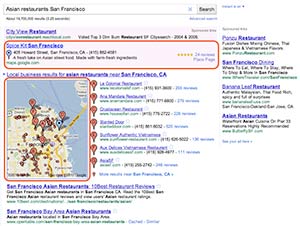I wanted to share with you a letter I sent out earlier this month to our Google Places clients. I think that you should be similarly aware of the changes that we are seeing in Google Places that affect the use of account set up and management services including our own. You will always get the truth from us on things that have changed on the Web, even if it affects our service offerings.
For now, we are evaluating if we will continue to offer Google Places management services or create a new and revised program.
+++++
I wanted to keep you updated with the changes that Google has been making in the last several weeks to Google Places.
First, it used to be that when your listing was shown in a local search that the first page in the search results Google showed was your Google Places page. It was crucial that this page be optimized for your services for local placement.
These past several weeks I have seen a change in the way Google returns Google Places. Now it appears that Google ranks your listing, but is driving traffic NOT to your Google Places page, but rather directly to your website. For some accounts Google shows a link to the places page which now really just shows an owner comment section (which we update monthly) and your Google reviews from customers.
Although I am not sure yet if Google is still using the information that we update on your account to rack and stack listings, what we have been doing in our monthly updates for Google Places accounts is not visible to the consumer when they click into the Google Places page – only reviews are visible and the “owners” comments.
For now I am not discounting the importance of what we do in a Google Places monthly update but am watching carefully so that every service you purchase from us has value. If based on this new information you would like to stop our $40 per month Google Places update service to see what happens to your listing, just let me know.
If as I evaluate further and if I see that what Google has changed makes our update service not meaningful for you, I will make sure to advise you so.
+++++
At this point, I don’t have a definitive answer to let you know about Google Places, but I do feel that we will be changing our program based on what is visible to the customer as well as potentially creating a Google Review Getting program. Stay tuned as we try to reach some conclusions on where your money is best spent for Google Places.

